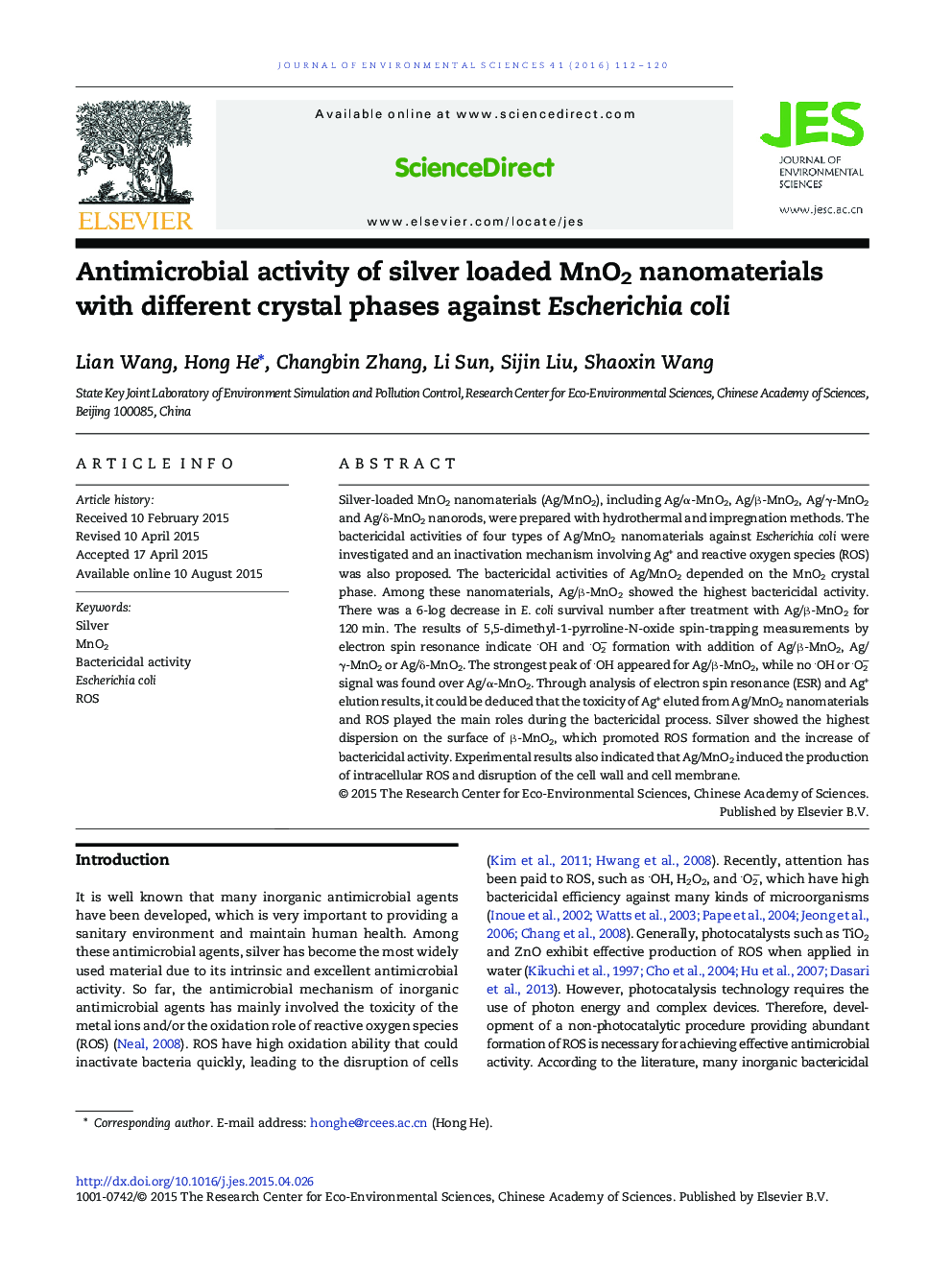| کد مقاله | کد نشریه | سال انتشار | مقاله انگلیسی | نسخه تمام متن |
|---|---|---|---|---|
| 4453699 | 1620812 | 2016 | 9 صفحه PDF | دانلود رایگان |

Silver-loaded MnO2 nanomaterials (Ag/MnO2), including Ag/α-MnO2, Ag/β-MnO2, Ag/γ-MnO2 and Ag/δ-MnO2 nanorods, were prepared with hydrothermal and impregnation methods. The bactericidal activities of four types of Ag/MnO2 nanomaterials against Escherichia coli were investigated and an inactivation mechanism involving Ag+ and reactive oxygen species (ROS) was also proposed. The bactericidal activities of Ag/MnO2 depended on the MnO2 crystal phase. Among these nanomaterials, Ag/β-MnO2 showed the highest bactericidal activity. There was a 6-log decrease in E. coli survival number after treatment with Ag/β-MnO2 for 120 min. The results of 5,5-dimethyl-1-pyrroline-N-oxide spin-trapping measurements by electron spin resonance indicate OH and O2‾ formation with addition of Ag/β-MnO2, Ag/γ-MnO2 or Ag/δ-MnO2. The strongest peak of OH appeared for Ag/β-MnO2, while no OH or O2‾ signal was found over Ag/α-MnO2. Through analysis of electron spin resonance (ESR) and Ag+ elution results, it could be deduced that the toxicity of Ag+ eluted from Ag/MnO2 nanomaterials and ROS played the main roles during the bactericidal process. Silver showed the highest dispersion on the surface of β-MnO2, which promoted ROS formation and the increase of bactericidal activity. Experimental results also indicated that Ag/MnO2 induced the production of intracellular ROS and disruption of the cell wall and cell membrane.
Figure optionsDownload as PowerPoint slide
Journal: Journal of Environmental Sciences - Volume 41, March 2016, Pages 112–120